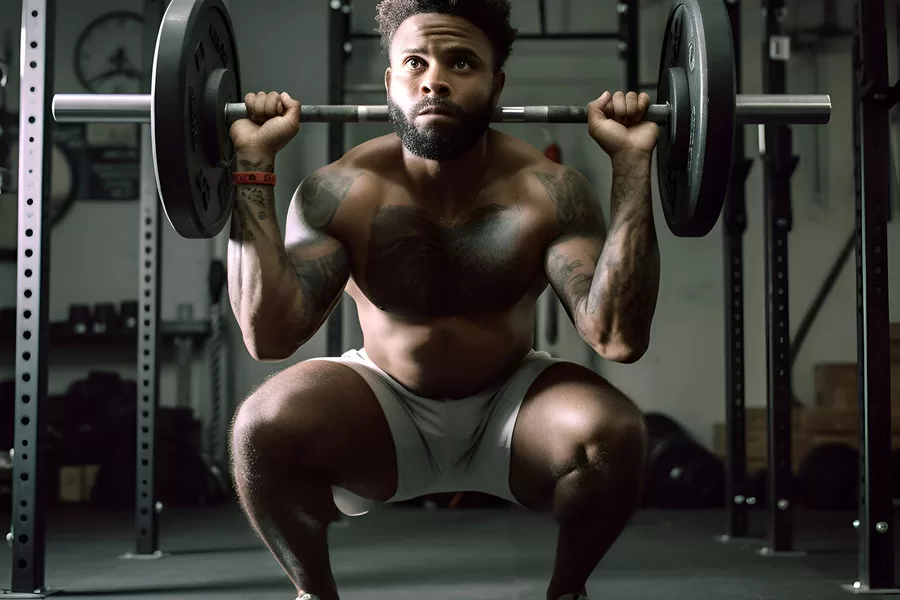
Have you ever hit an invisible wall in your fitness journey, where no matter how hard you push, progress seems to elude you? What could be the reasons for such a situation, what to do and how can this be avoided?
Unraveling the Mystery of Plateaus
Delving into the conundrum of training plateaus unveils a fascinating interplay between physical exertion and the body’s adaptive mechanisms. Initiation into an unfamiliar fitness routine propels the body into a state of heightened responsiveness. This period, characterized by a rapid enhancement in physical capabilities, is often marked by a surge of enthusiasm, as tangible progress is readily apparent. The early days of a new fitness regime are exhilarating, with each session bringing visible strides towards achieving one’s fitness aspirations.
Mastering the Body’s Efficiency
The body, in its infinite wisdom and pursuit of efficiency, starts acclimating to the rhythm and demands of the exercises at hand. This adaptation, a cornerstone of biological survival, ensures that energy expenditure is minimized during repeated activities. While this efficiency is a marvel of human biology, it concurrently ushers in the plateau phase—a period where the once noticeable leaps in performance begin to dwindle, leaving a trail of diminishing returns.
The Art of Overcoming Stagnation
The arrival at this plateau can evoke a sense of impasse, challenging the spirits of the most ardent fitness enthusiasts. It’s a juncture that demands a blend of insight, patience, and strategy. Recognizing that the plateau is not an insurmountable barrier but rather a signpost for evolution in one’s fitness journey is crucial. It signifies a readiness to elevate the complexity and intensity of the workout regime, pushing the boundaries of what the body has grown accustomed to.
Strategizing for Continuous Evolution
To transcend the plateau, one must engage in a strategic dance with their own physiology. Introducing novel, unexpected challenges to the workout routine jolts the body out of its comfort zone, reigniting the adaptation process. This strategy not only facilitates the breach of the plateau but also embellishes the fitness journey with richer insights into the body’s adaptability and strength. Thus, by dynamically fine-tuning one’s training approach, perpetual progress becomes an attainable hallmark of their fitness narrative.
Spotting the Halt: Indicators of a Training Standstill
Embarking on a fitness voyage often comes with its share of highs and lows, with the training plateau representing a significant challenge. Recognizing the early warning signs can empower you to make strategic adjustments, ensuring continuous growth.
Stalled Performance Gains
The most glaring evidence of a training plateau manifests as a cessation in physical progress. Whether your aspirations lie in building strength, increasing speed, or enhancing stamina, a plateau marks a period where no further advancements seem possible. Imagine persistently lifting the same weights without feeling stronger, or running consistently without shaving seconds off your time — these scenarios epitomize a plateau. Such a halt in progress is not only frustrating but also a clear signal to reevaluate and diversify your training approach.
Waning Workout Zeal
A less overt but equally significant indicator of a plateau is a diminishing enthusiasm for workouts. The initial stages of a fitness regimen are often fueled by the thrill of new challenges and the visible results they yield. However, as these results plateau, so too can your motivation, transforming once-energetic sessions into a chore. This decline in eagerness is not merely a bout of laziness but a psychological reaction to the diminishing returns from your current regimen. Acknowledging this shift is pivotal in revamping your routine to reignite your training fervor.
Unrelenting Exhaustion
Another subtle hint of a training plateau is a pervasive sense of fatigue that overshadows your days, distinct from the usual post-workout tiredness. This form of exhaustion lingers, impervious to rest and recovery efforts. If you find yourself perpetually worn out, despite getting ample sleep, or if your muscles seem to protest longer than usual after workouts, it’s likely your regimen is no longer promoting optimal recovery. This continuous weariness can encroach upon both your physical endeavors and your day-to-day vitality, signaling a need to recalibrate your workout and recovery equation.
Armed with an understanding of these plateau indicators, you can better navigate the complexities of training adaptation. By attentively monitoring your body’s feedback and being willing to adjust your strategies, you can surmount plateaus and maintain an upward trajectory in your fitness journey.
Charting a Course Through Stagnation
- Refreshing Your Routine: Varying your routine’s intensity, broadening the variety of your activities, altering the volume of work, and incorporating different types of movements can rekindle your body’s response to exercise. Experimenting with new forms of activity, like endurance or agility training, awakens underutilized muscles and energy systems, presenting your body with fresh challenges that necessitate adaptation and fuel progress.
- Emphasizing Downtime and Recovery: Ensuring sufficient rest and engaging in recovery-focused practices form the backbone of surpassing any performance plateau. Emphasizing the importance of sleep, planning rest days intentionally, and indulging in light, restorative movements or stretches are essential. Such habits support the body’s inherent healing processes, bolstering resilience and capability. Recognize these moments of rest as essential for your body’s internal processes of repair and strengthening, crucial for moving beyond current limitations.
- Optimizing Nutritional Support: Reevaluating and adjusting your eating habits to better suit the demands you place on your body can yield significant benefits. Increasing intake of recovery-supporting nutrients, balancing your caloric consumption with your energy output, and timing your meals to support your activity levels can dramatically enhance your body’s preparedness and developmental capacity. Tailoring your nutrition to your goals provides your body with the fuel it needs for peak performance and growth.
Embarking on New Challenges
A plateau often signals it’s time to inject new ambitions into your regimen. Crafting more challenging targets invigorates your motivation and focuses your efforts. Pursuing advanced milestones, enhancing your versatility, or delving into new activity domains can ignite your enthusiasm and propel you over hurdles, opening up avenues for growth and achievement.
Leveraging Expertise for Advancement
When progress feels out of reach, seeking insights from wellness professionals can illuminate alternative strategies and modifications to your current approach. Collaboration with fitness experts, nutrition advisors, or coaching specialists can provide customized recommendations and adjustments, arming you with the knowledge and support for confident progress.
Adopting these refreshed approaches invites a deeper, more refined journey towards overcoming stagnation. It’s about continually adapting your tactics, listening keenly to your body, and nurturing your commitment to excellence, ensuring your path forward is marked by steady and meaningful progress towards optimal well-being.
Proactive Steps to Sidestep Training Plateaus
While much of our focus has been on breaking through existing plateaus, there’s immense value in adopting strategies to prevent these standstills before they even start. Taking proactive measures can help maintain steady progress, keeping motivation high and performance on an upward trajectory.
Embrace a Varied and Progressive Regimen
The cornerstone of avoiding plateaus lies in the design of your workout plan. A routine that continuously challenges your body in new ways is key. This means varying your exercises, workout intensity, and volume over time. Implementing a progressive overload principle is crucial, where you gradually increase the weight, reps, or intensity of your workouts. This approach ensures your body never gets too comfortable and is always adapting to slightly higher demands.
The Role of Cross-Training
Integrating different types of physical activities into your routine, known as cross-training, can significantly reduce the likelihood of hitting a plateau. By alternating between strength training, cardiovascular workouts, flexibility exercises, and other physical disciplines, you work on different muscle groups and energy systems.
Monitor and Adjust Training Intensity and Recovery
Regularly assessing your training intensity and ensuring you’re incorporating adequate recovery periods are essential to avoid overtraining and plateaus. Use tools and apps to track your workouts and monitor progress. Listen to your body for signs of fatigue or overexertion, and don’t underestimate the power of rest days and recovery techniques like stretching, massage, or yoga. Balancing exertion with recovery prevents your body from adapting too comfortably to your workouts, keeping the door open for continuous improvement.
Stay Attuned to Your Body
One of the most effective strategies to prevent plateaus is staying highly attuned to your body’s signals. If you notice signs of stagnation or diminishing returns, it may be time to reassess your routine. Being flexible and willing to adjust your workouts based on how your body responds is crucial. This could mean changing your training focus for a period, incorporating new activities, or adjusting your rest and recovery protocols.
Seek Regular Feedback
Finally, don’t underestimate the value of feedback from professionals or experienced peers. Regular check-ins with a trainer or coach can provide you with insights into potential adjustments to your routine before a plateau occurs. Additionally, being part of a community, whether online or in-person, can offer support, motivation, and fresh ideas to keep your workouts dynamic and effective.
Conclusion
Hitting a plateau is a natural phase, marking your body’s adaptation to its exercise regime. Spotting plateau indicators early, such as halted improvements, waning enthusiasm for workouts, and increased fatigue, is key to timely adjustments. Adopting diverse training tactics, integrating varied fitness disciplines, and fine-tuning rest intervals are pivotal for pushing past performance lulls. Charting new fitness milestones and consulting with fitness experts can forge paths through stagnation and fuel ongoing progress. Maintaining a dynamic and adaptable approach to your fitness plan, informed by continuous self-monitoring, can navigate around and prevent plateaus.
FAQs
This phase indicates your physique’s accommodation to its current regimen, diminishing the impact of prior routines.
Such phases emerge as the body optimizes its response to the habitual demands of your regimen, reducing the growth impact of familiar routines.
Revitalizing your routine with new challenges, adjusting downtime, and drawing upon expert advice can aid in moving beyond this phase.
Though completely avoiding these phases may be unrealistic, their impact can be mitigated by continually refreshing your approach, embracing new challenges, and heeding your body’s signals.







